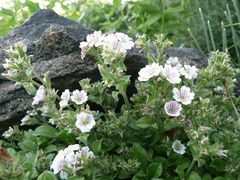Gypsophila cerastioides
| Gypsophila cerastioides subsp. var. | ||||||||||||||||||||||||||||||||||||||||||||||||||||||||
|---|---|---|---|---|---|---|---|---|---|---|---|---|---|---|---|---|---|---|---|---|---|---|---|---|---|---|---|---|---|---|---|---|---|---|---|---|---|---|---|---|---|---|---|---|---|---|---|---|---|---|---|---|---|---|---|---|

|
|
| ||||||||||||||||||||||||||||||||||||||||||||||||||||||
| ||||||||||||||||||||||||||||||||||||||||||||||||||||||||
Describe the plant here...
| Standard Cyclopedia of Horticulture |
|---|
|
Gypsophila cerastioides, D. Don. Low, densely pubescent: lvs. pubescent, the radical ones long-petioled, the others spatulate or obovate, obtuse or nearly so: fls. large (often 2/3 in. across), white or lilac, pink-veined. Himalayas. —Of creeping habit; excellent for rockwork.
|
Cultivation
Propagation
Pests and diseases
Varieties
Gallery
-
photo 1
-
photo 2
-
photo 3
References
External links
- w:Gypsophila cerastioides. Some of the material on this page may be from Wikipedia, under the Creative Commons license.
- Gypsophila cerastioides QR Code (Size 50, 100, 200, 500)
